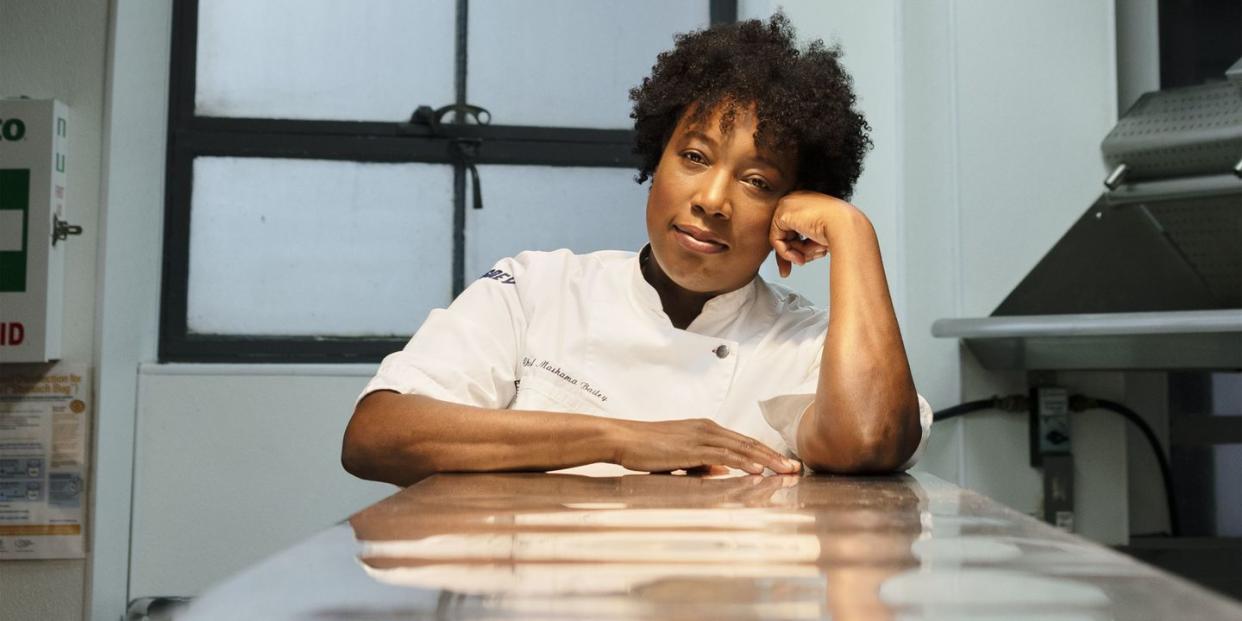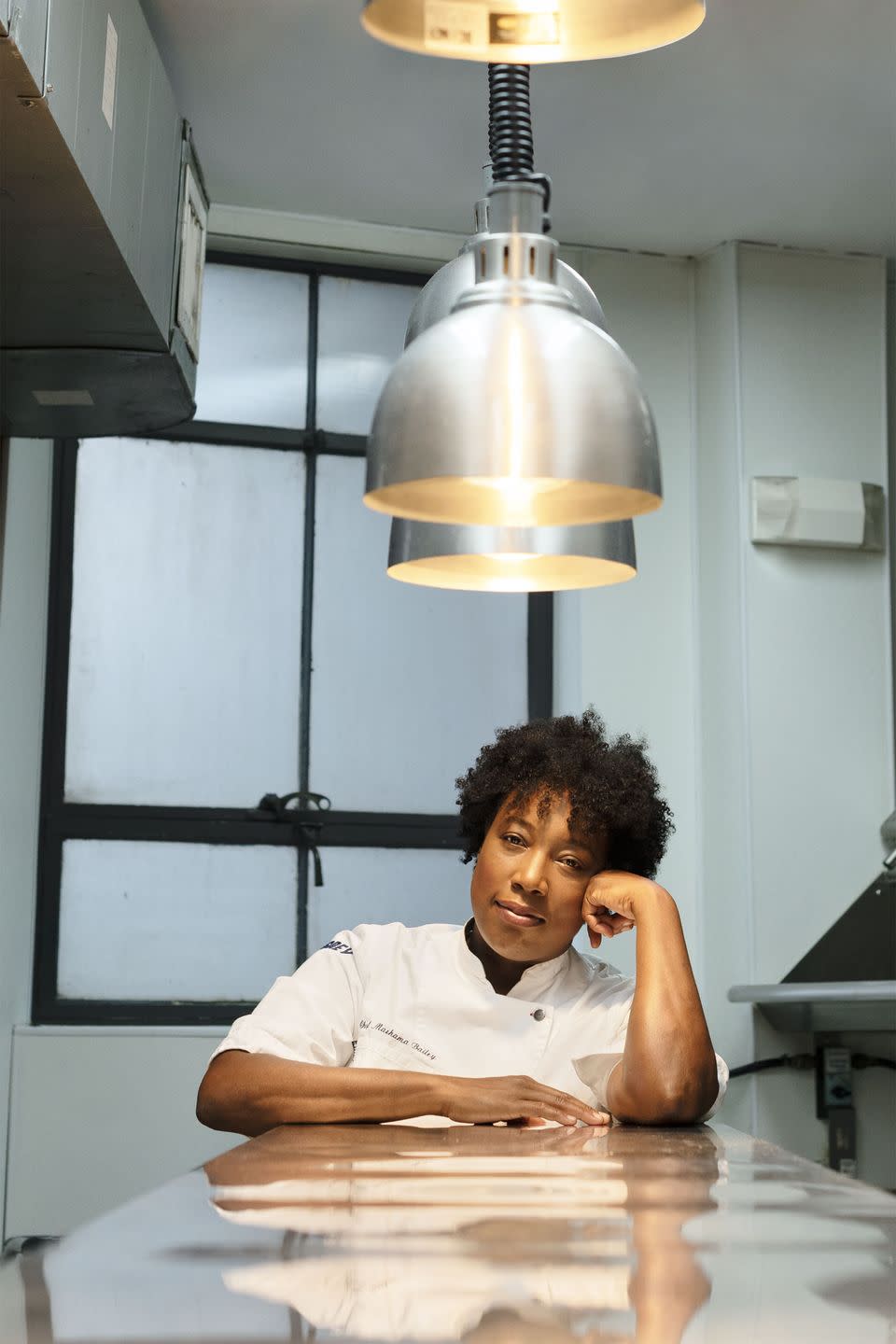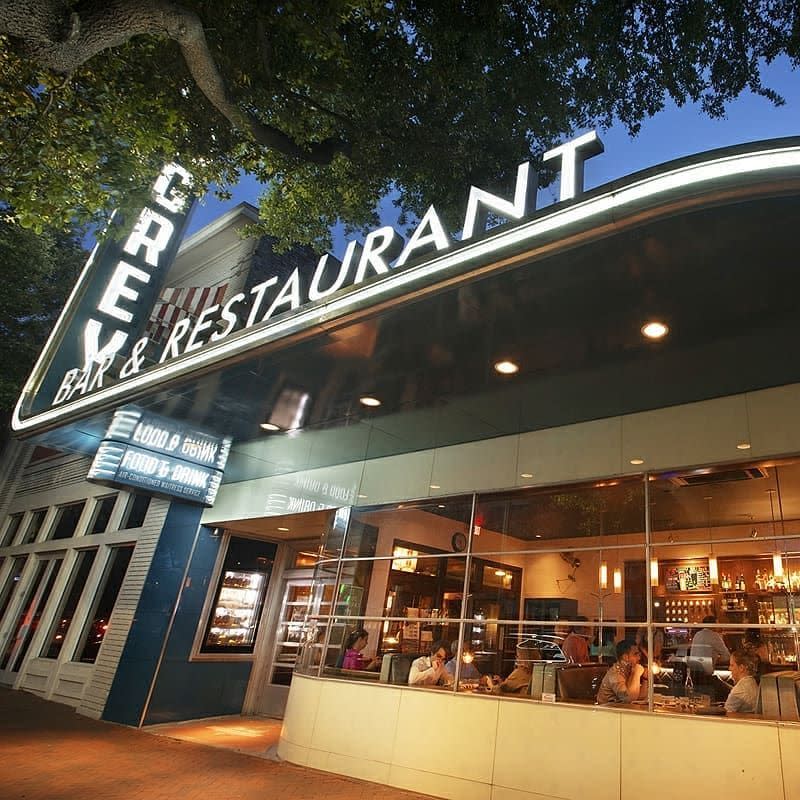Chef Mashama Bailey on Getting Her Seat at the Table


When I was five, we moved from my hometown of the Bronx, New York, to Savannah, Georgia. We’d visit my maternal grandparents in Waynesboro, which is a very, very small town in the countryside that seemed to have only one stoplight. Every Friday morning, my granddaddy would go fishing and catch whiting or trout or some other freshwater fish. My grandmama would fry them up whole in cornmeal, salt, and pepper, and we would eat them with grits and baked beans and mustard. It was a normal supper, but it was special to me because I got to know them a little bit better by sitting around and talking and eating on Fridays. You learn about your family through the food that they cook.
When I was 11, we moved to New York City to live with my dad’s mom, whom we called Grandma. My parents were in social work and there was more opportunity there. Grandma loved food. She invested in herself by putting good food in her stomach and through that investment she extended love to others. Whenever she cooked, she always made sure she had extra for whoever walked through her door. Grandma would shop at this discount place in Long Island called Gout Farms and make flamboyant recipes from The Joy of Cooking for me and my siblings and take us to family-style restaurants. On Friday nights, instead of my grandparents cooking fish, we would either eat Chinese takeout or go to our local fish-fry joint.
I went to school for social work, but it didn’t make me happy. Cooking was one of those things I just enjoyed. Holiday meals were always a big deal in our family, especially Christmas and Thanksgiving dinners. I made the sweet potatoes and layered them with brown sugar, butter, cinnamon, nutmeg, and salt. I was always the person who was in the background, but when I started cooking, people started paying attention to me in a way that was all mine.
In 1999, I attended the Institute of Culinary Education, and then worked as a caterer and chef for six years. In 2007, I did a six-month stage at Château du Feÿ in Burgundy, France. It was there that I realized I wanted to be more engaged with local farmers and the actual growing of the food I cooked.
After working in other New York kitchens, I got a job at Prune in the East Village. I was drawn to the restaurant’s chef and owner, Gabrielle Hamilton. Her mother is French, and she makes very Mediterranean, Old World food, but it’s done in a very personal way. That was really an “aha” moment for me. I began to ask, “What is my food?” “Why do I want to be a chef?” Up to that point, I had only worked with white folks, so I was absorbing their points of view and not paying attention to my own. No one was talking about Black food in these kitchens and its contribution to American cuisine.
Then, in 2014, John Morisano asked me to be the partner and executive chef at his new Southern restaurant in Savannah, The Grey. I always knew I wanted to move back South, so I took a leap of faith.
When I started building out the first menu, I knew that my knowledge of Southern food wasn’t very vast, so I started reading. The Savannah Cook Book helped me understand the traditions of the area, and The Edna Lewis Cookbook was also really inspiring. Another cookbook, Field Peas to Foie Gras, was written by a Black woman named Jennifer Hill Booker, who grew up in the South and went to France. She used those European traditions to cook Southern food, and her book let me know that it’s okay to put a pig’s foot in a pot of beans and serve it—people will be into that.

I sent my menu to Gabrielle, and she told me that I had to get it focused and that it wasn’t really saying anything. That was a bit of a gut punch. I dove deeper into researching and began taking inspiration from the Gullah Geechee people, and looked at the direct African influences in the regional cuisine. In the North, soul food is collard greens and chitlins and fried pork chops. But down here it’s barbecued fish, biscuits, dumplings, and stews. The ingredients are different. The food is vaster.
Now my menu draws culinary parallels between the African diaspora and the Old and New Worlds. We serve chicken country captain, a traditional Savannah stewed chicken; thrills, frozen ice pops I ate here as a kid; vegan collard greens, which I smoke with pecan wood; and crab beignets. By understanding what people’s traditions are, you’re able to explore Southern food in a far deeper way. Like, I didn’t realize that oysters were really prevalent in the African American community until I came back to Savannah. Those are the types of stories I want to tell through my food.
Right before it opened, my family and I celebrated Thanksgiving dinner at the Grey. Ever since, we’ve upheld that tradition. I’ve taken on the role of my grandma and make the turkey. Every year she cooked it a bit differently, so every year I do the same. One day I’ll nail my perfect routine, and all the testing will have been worth it.
Mashama Bailey and John O. Morisano are the co-authors of Black, White, and the Grey (Lorena Jones Books), out in January.
HAIR AND MAKEUP: JUSTINA FORD FOR DOLLFACE BY JULES
This article originally appeared in the December 2020/January 2021 issue of Harper's BAZAAR, available on newsstands December 1.
GET THE LATEST ISSUE OF BAZAAR
You Might Also Like

